Nine games into the 2023/24 Ligue 2 season, Auxerre — who were relegated from Ligue 1 last term — sit third on the table under Christophe Pélissier; this 58-year-old coach guided Lorient back to the top-flight in 2019/20, with Les Merlus ending that campaign top of the table with the most goals scored in the league.
He’s got off to a positive start in his bid to repeat that feat this term, with Auxerre currently boasting by far the best goals tally (21) in France’s second-tier — seven more than second-best. The Burgundy-based club also boast the highest xG tally (15.95) in Ligue 2 at this stage of the campaign.
So, Pélissier’s productive attack has been the driving force behind his side’s promotion bid at this stage of the campaign, but how exactly does this attack function?
In our tactical analysis and team-focused scout report, we’ll dive into Pélissier’s successful strategy and tactics thus far in Ligue 2 with Auxerre to answer that question.
Ball progression
Auxerre have primarily (and almost exclusively) defended in a 4-2-3-1 shape this season. While in possession, player movement makes it difficult to define a particular ‘formation’; they’ve primarily lined up similarly to how we see them without the ball — a 4-2-3-1 — as illustrated in figure 1.
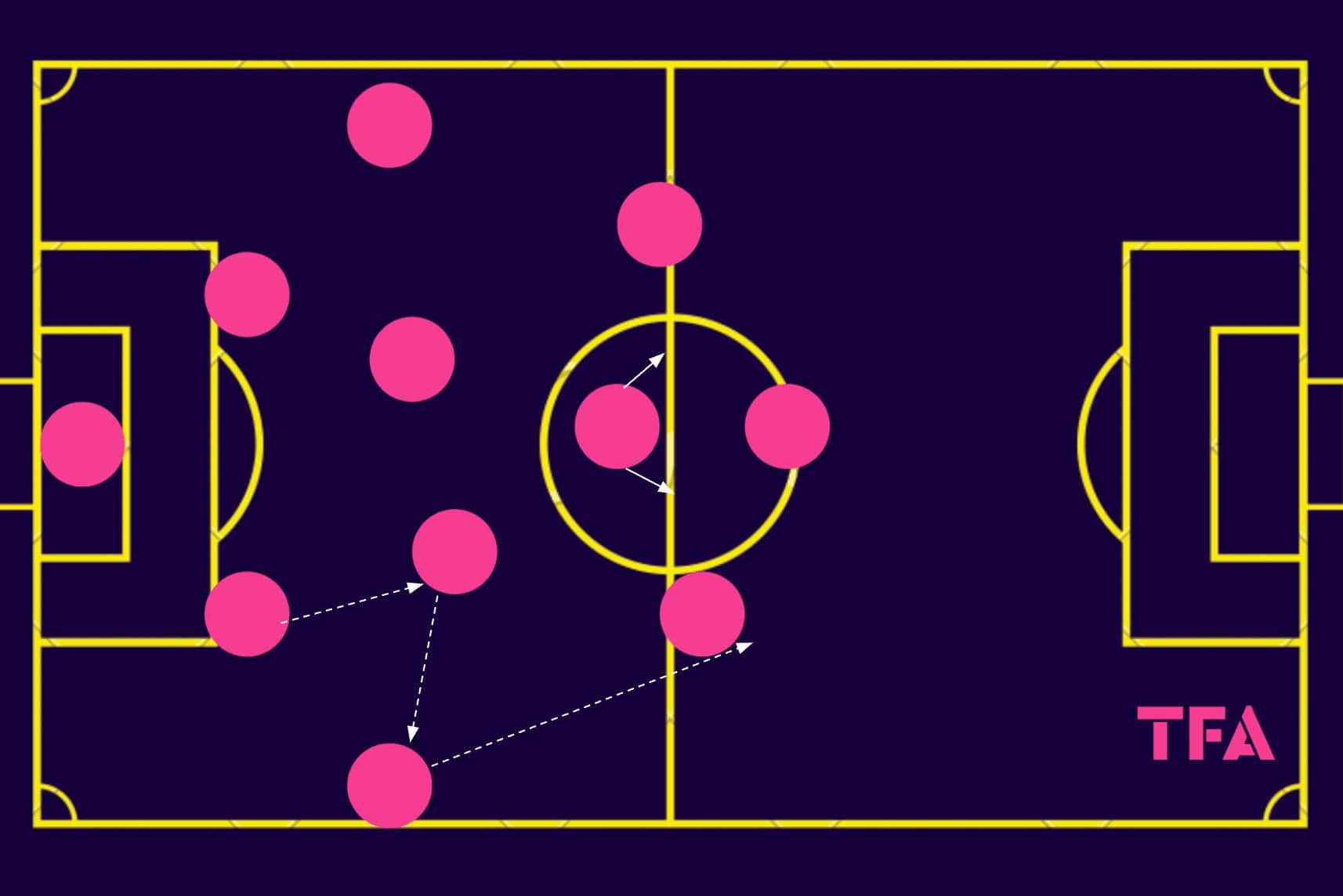
The full-backs get wide, typically standing right on the sidelines. At the same time, the central midfield duo will usually stagger their positioning to an extent in order to give the centre-backs better passing options and make themselves a bit more difficult for the opposition to control. Auxerre are then left with four attackers whose ability to find some space in valuable positions they’ll also rely on to facilitate their ball progression.
Pélissier’s full-backs play a vital role in the progression phase; we’ve drawn out a typical example of this in figure 1. It’s common to see the centre-back play the ball into midfield with the midfielder, then attracting some attention from the opposition’s press. This player will typically set up the full-back with a pass played in front of them, allowing the full-back to then drive the team forward into the opposition’s half.
Auxerre don’t have the most remarkable technical quality in the middle of the park, but their full-backs are good in this area. We’ve seen this passage of play described above on numerous occasions this term. It’s one of their most common methods of ball progression.
They still use the midfield but don’t ask too much of the midfielders based on the quality they have. The midfielders must make themselves available to receive with their off-the-ball movement and perform a layoff pass to the full-back, meaning nobody must receive on the half-turn. The full-back should be able to receive with a bit of time and space out wide after the midfielder has attracted the press centrally. It’s a suitable method of progression, considering the team’s strengths and weaknesses.
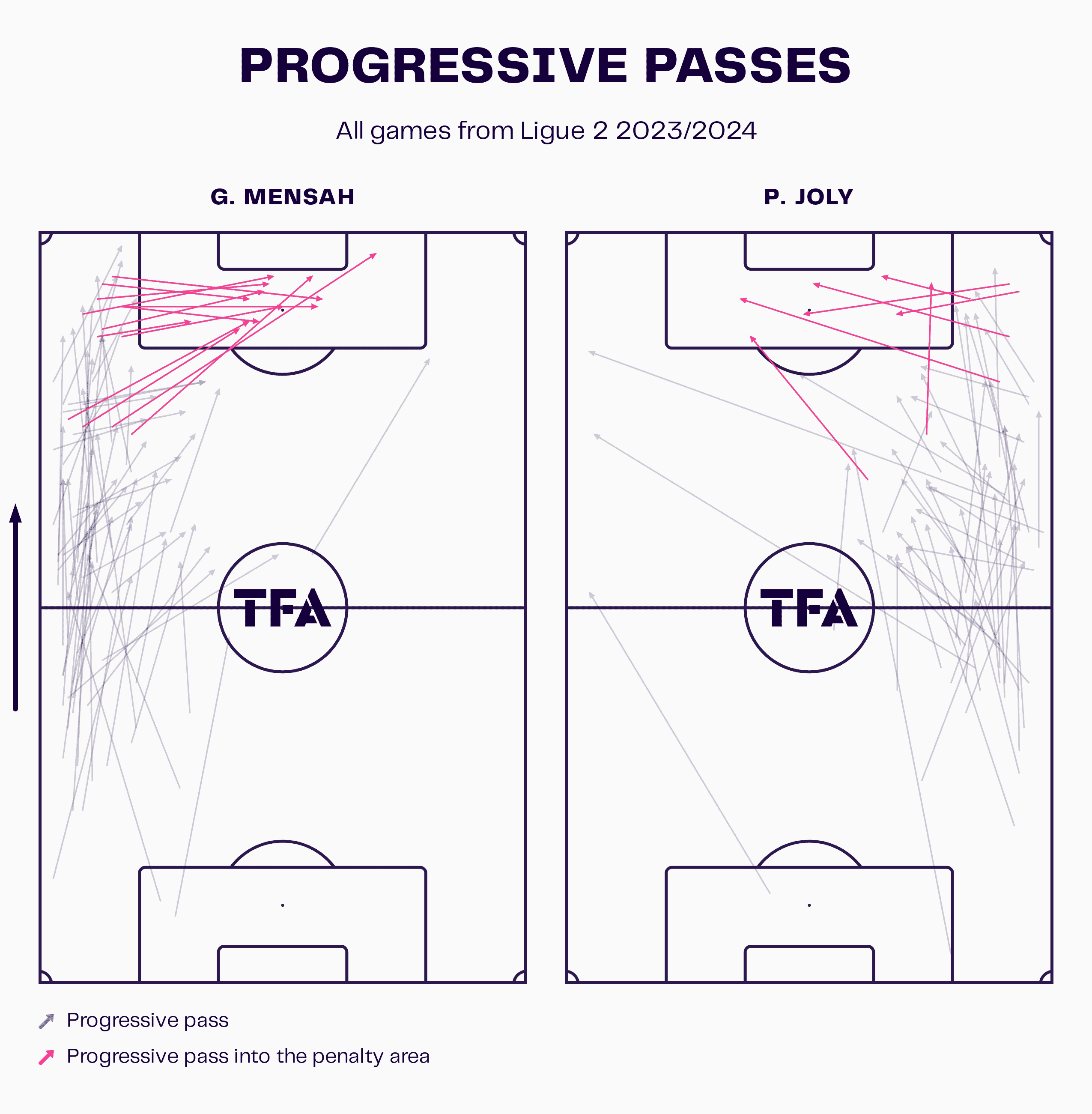
Gideon Mensah has been Auxerre’s primary left-back this term, with Paul Joly mainly playing on the right. They’ve acted as important deep-lying playmakers from the wide areas for their side, as their respective progressive pass maps in figure 2 indicate.
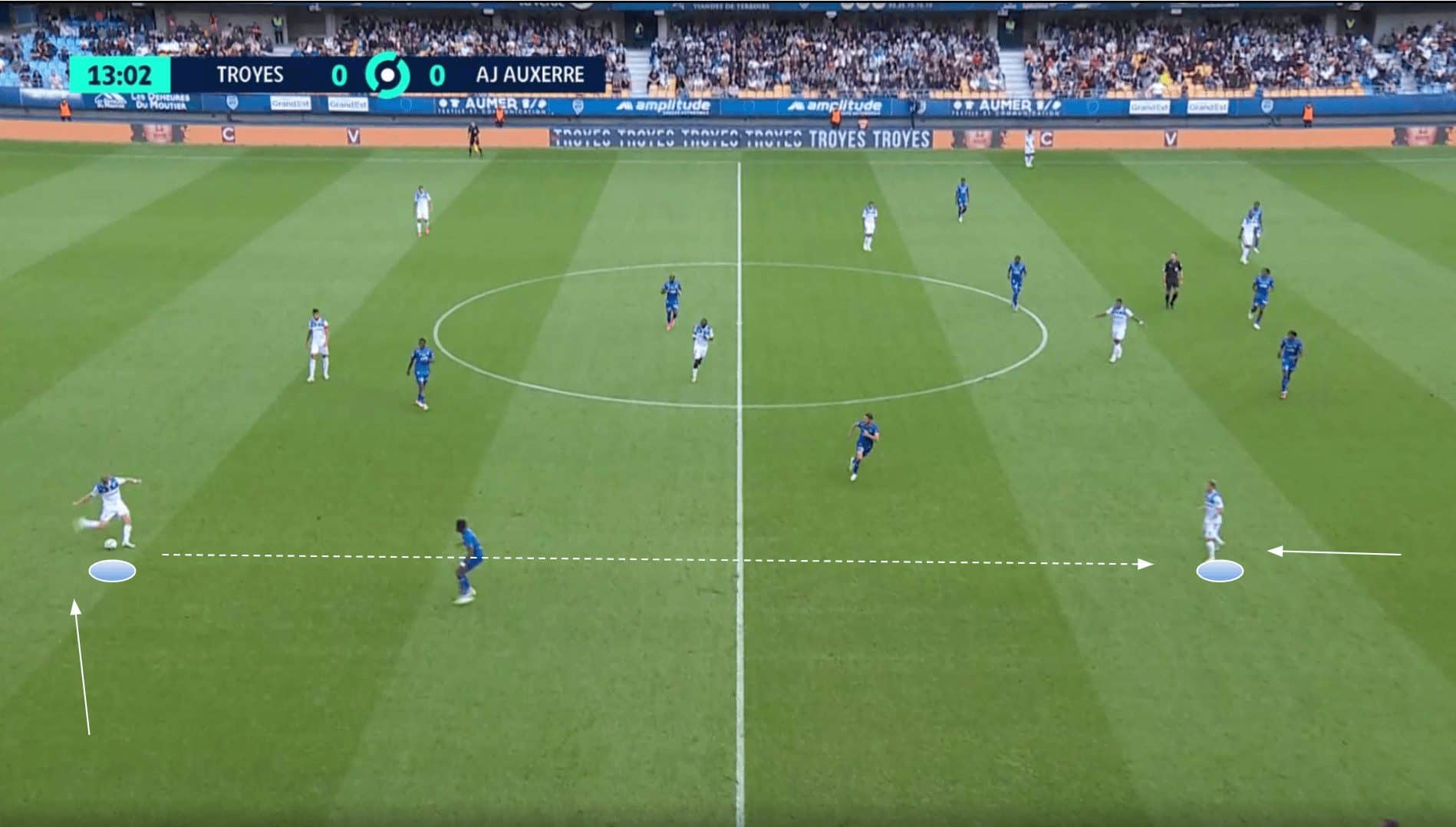
It can’t be understated how vital the movement from up top is with regard to Auxerre’s ball progression. Indeed, they rely on their full-backs’ passing abilities. Still, the varied movement from their attacking midfielders and striker adds a level of unpredictability to their progression in determining exactly how they’ll arrive in the final third and what threat they pose the opposition’s backline.
For instance, in figure 3, we see how the ’10’ has shifted into the half-space from the centre — a common movement for Pélissier’s ’10’ this term, typically Gauthier Hein — and dropped off slightly, offering Joly the chance to play a ball to feet that’d break two lines of the opposition’s press.
After receiving here, the attacking midfielder has time and space to turn and continue his side’s progress towards the opponent’s goal from just the edge of the final third.
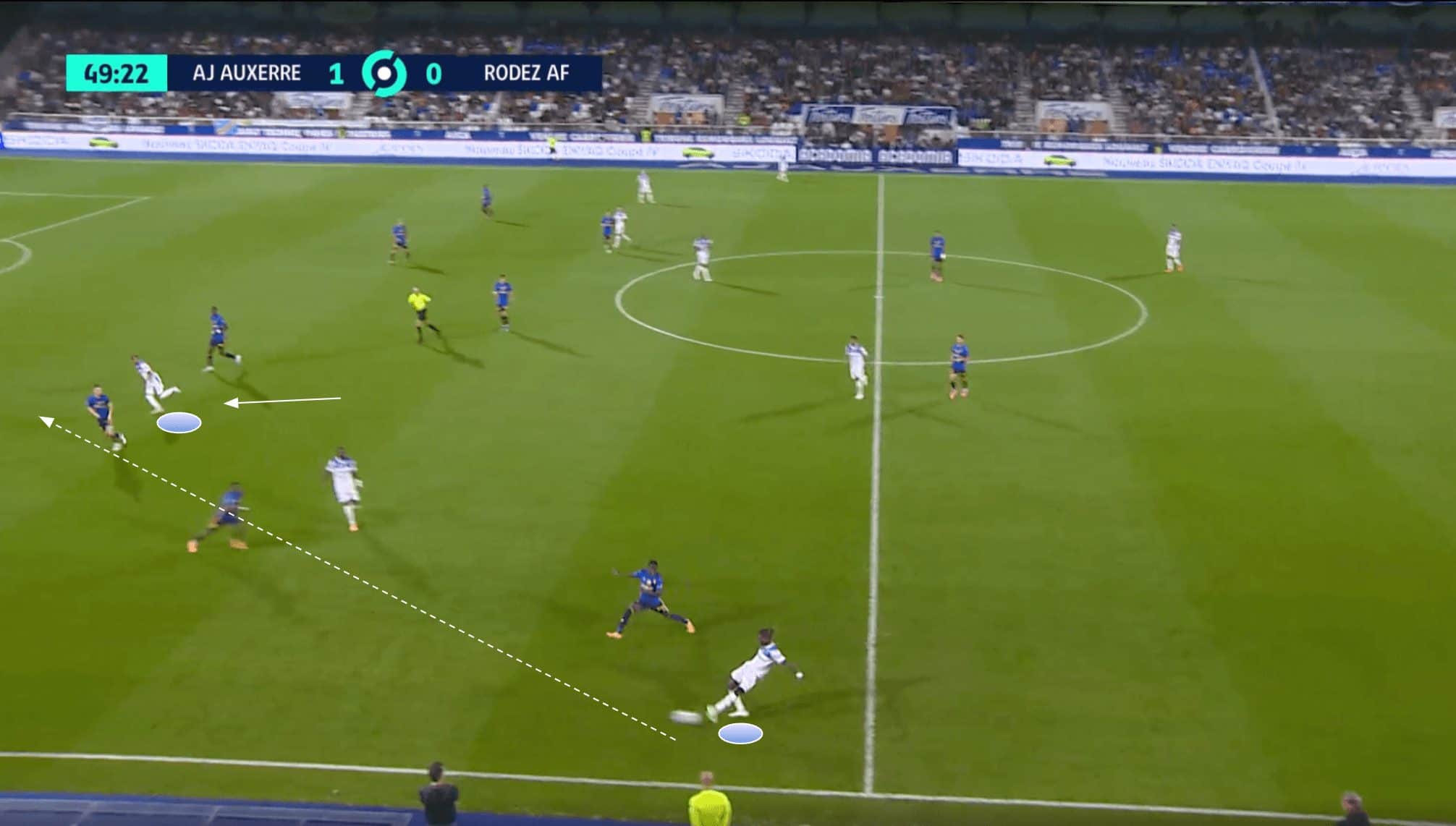
Meanwhile, figure 4 provides an entirely different example, with the attacker making a break for the space in behind the opposition’s backline, giving Mensah the chance to play a through ball in behind for the forward to chase.
The full-backs and attackers need to cooperate, with the need for the deeper players to react to the attackers’ varied movement and display a range of different pass types apparent, along with the need for the more advanced players to change up their runs and provide different options to the deep-lying playmakers.
Chance creation
Within the final third, wing play remains paramount for Auxerre. Their main method of chance creation is crossing — and the full-backs, again, have a central role in this regard.
Both Mensah (4.64 per 90) and Joly (3.84 per 90) have played a plethora of crosses this term, but Mensah has been more effective with those he’s played.
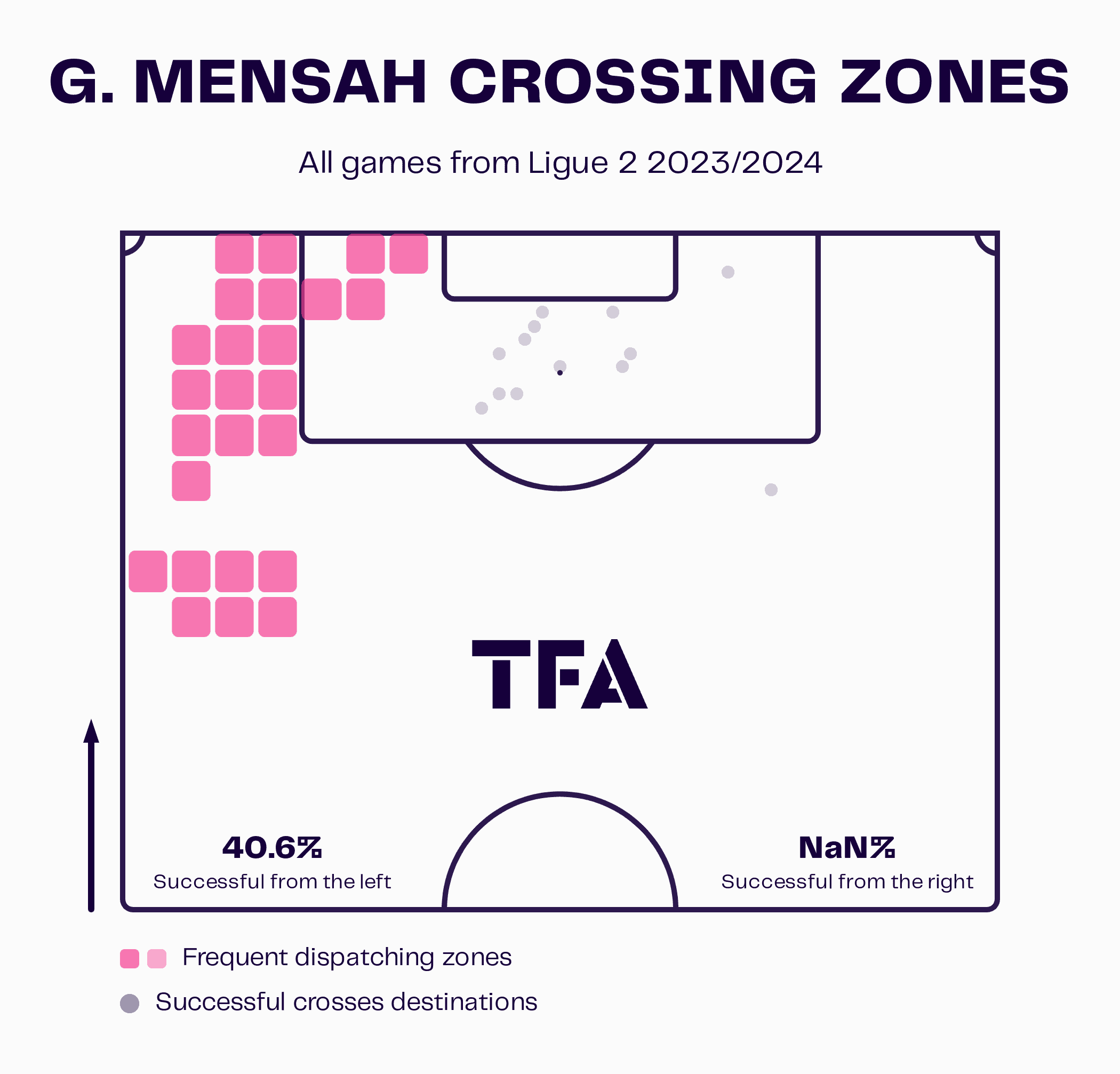
The 25-year-old Ghanaian has played plenty of balls into the box from deep as well as from higher up towards the byline.
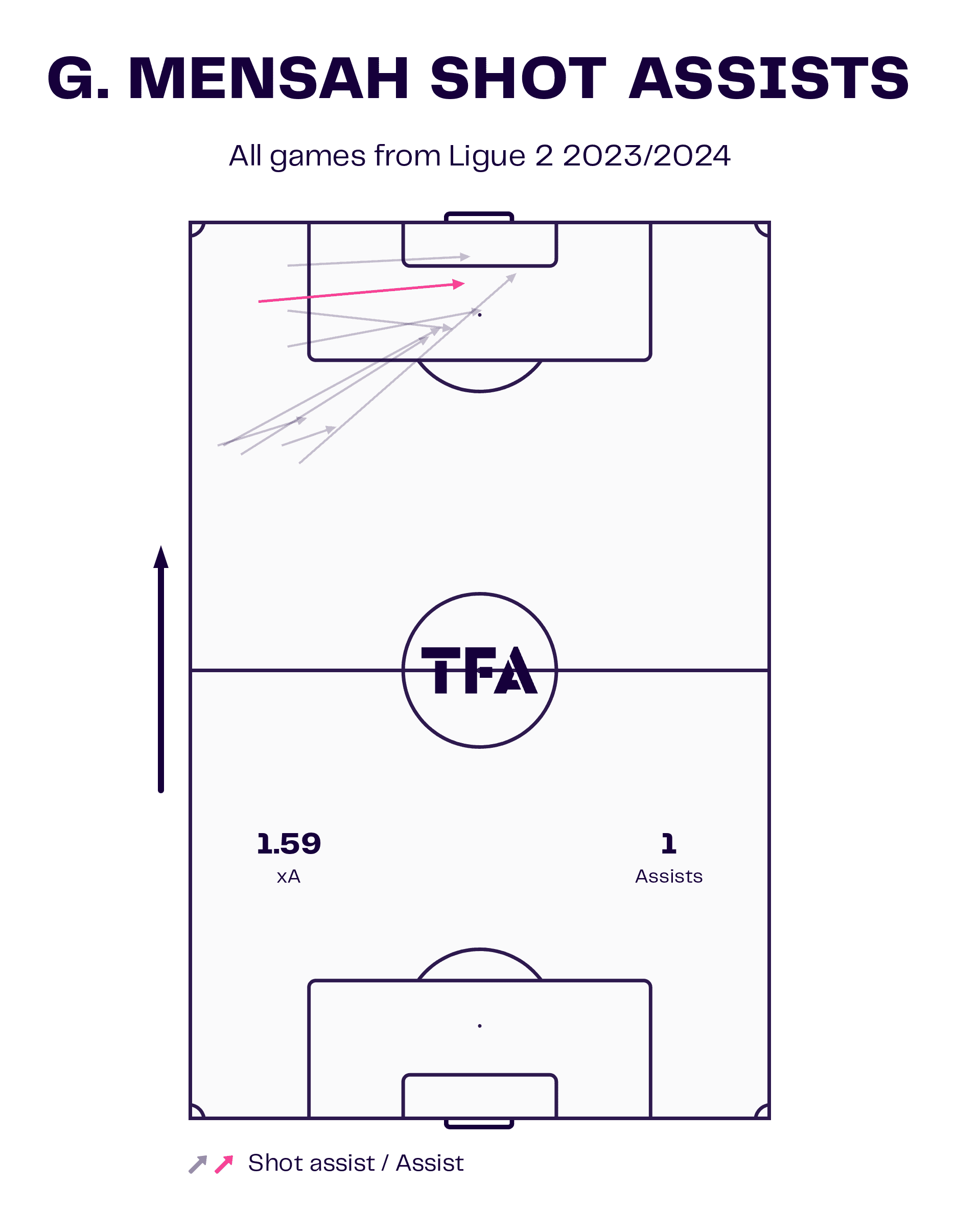
He’s been very effective with his deeper crossing, with those balls making up a significant portion of his shot assists in 2023/24.
Then, on top of the full-backs, the attacking midfielders have also played an essential role in Auxerre’s chance creation, especially from a crossing standpoint.
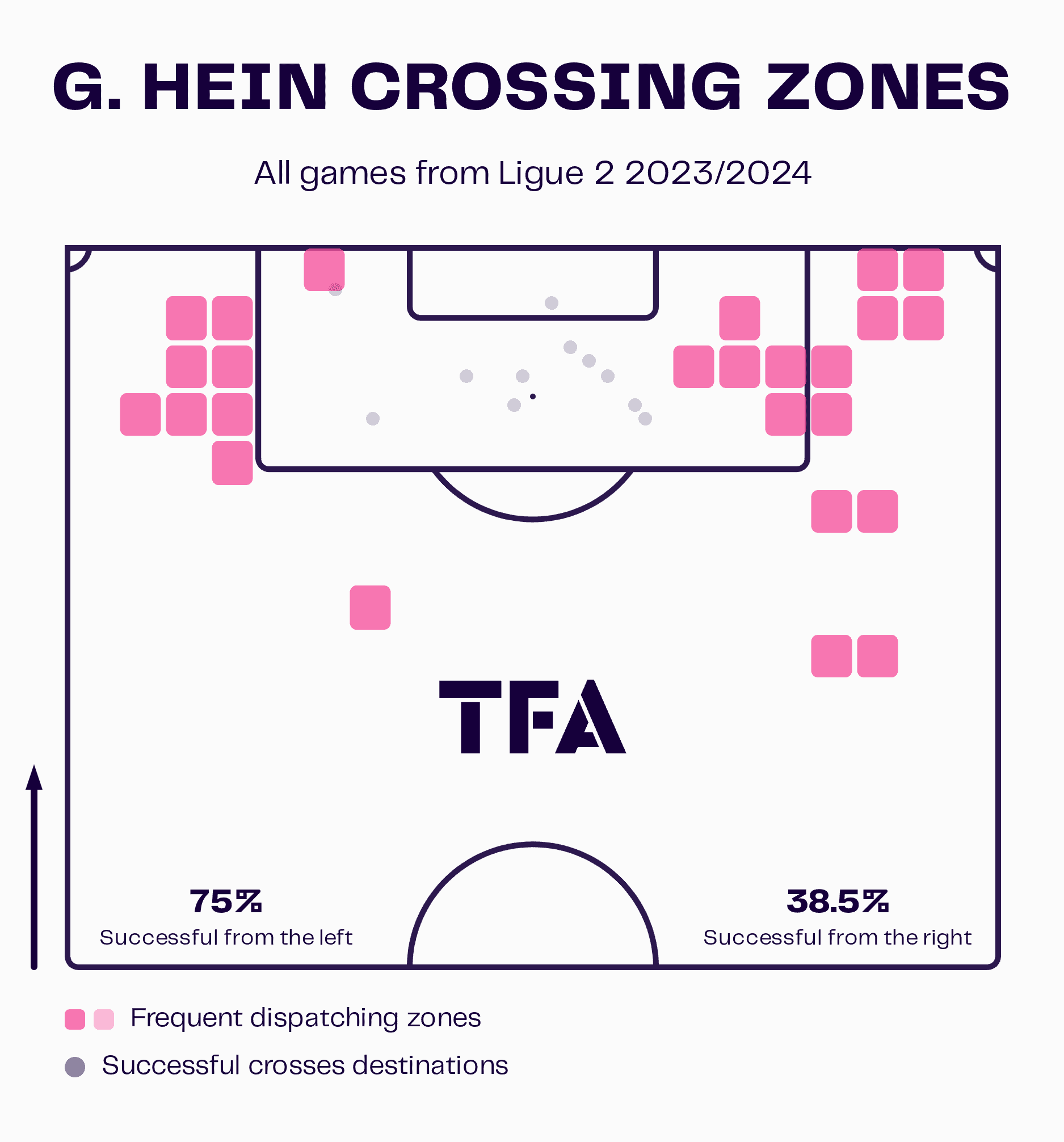
As mentioned earlier, the ’10’, Gauthier Hein, doesn’t typically remain central, preferring to drift out into slightly wider areas both to receive the ball and create. He’s also been a significant contributor of crosses for Pélissier’s squad this term, with his crossing zones shown in figure 7.
He tends to send the ball in from closer to goal more often than Mensah, for instance, producing plenty of low-driven balls into the box and cutbacks.
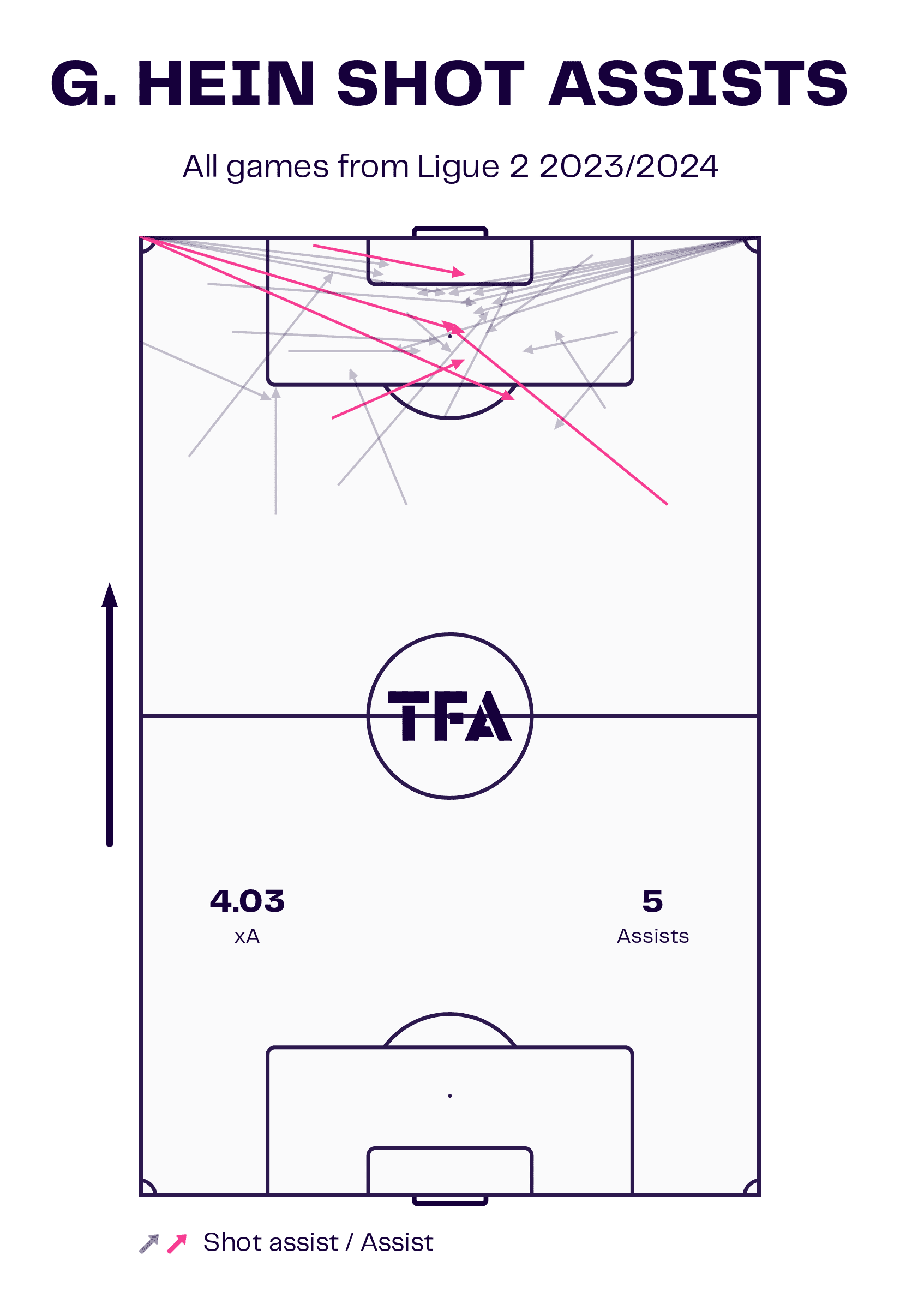
Figure 8 highlights his shot assists for the 2023/24 campaign, of which there have been many, especially as Hein is Auxerre’s set-piece specialist. On top of that, this image further emphasises how his short crossing and cutbacks lead to valuable chances for his side.
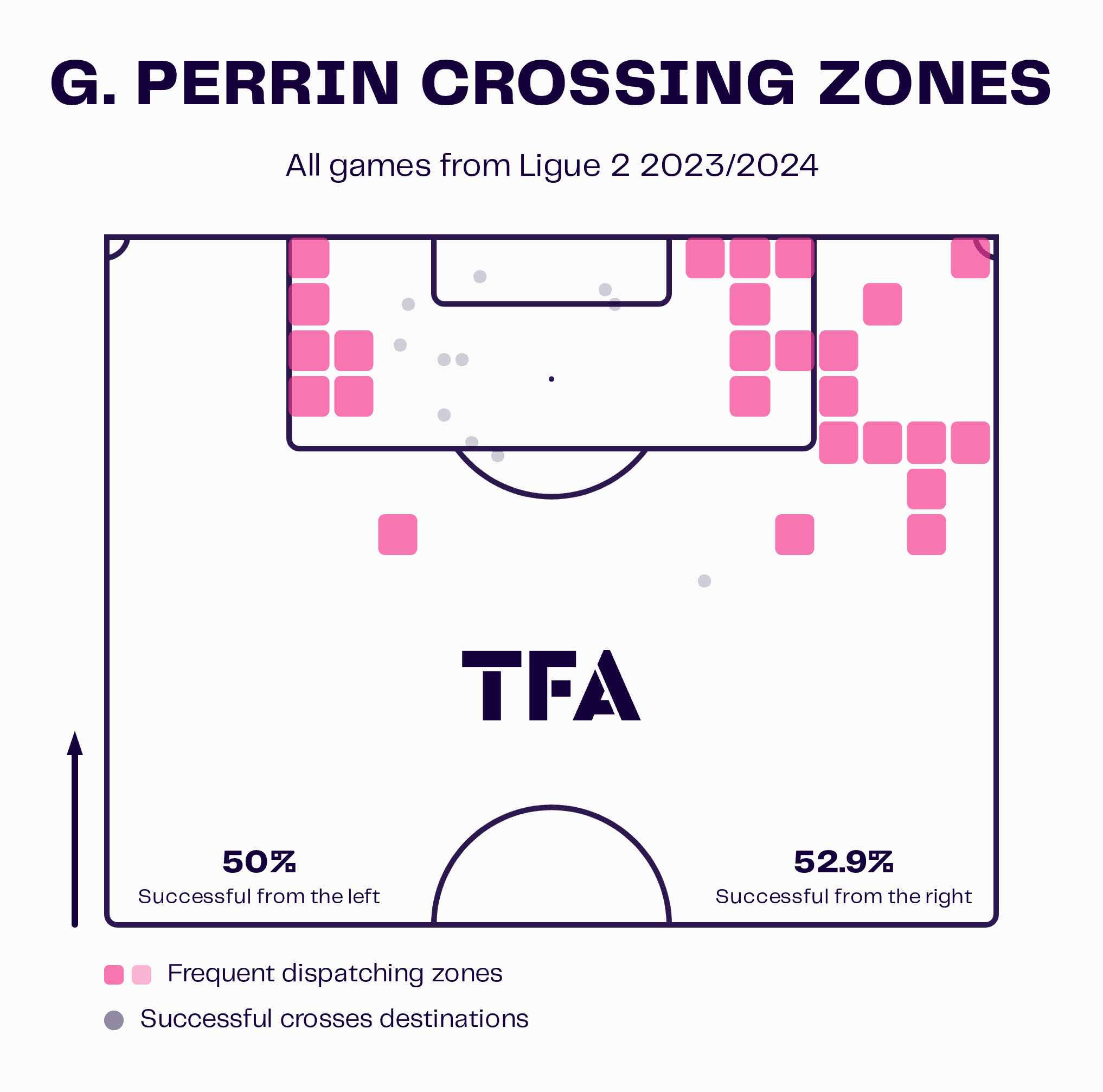
Gaëtan Perrin has mainly occupied the right wing for Pélissier’s side this term, and he, too, has been an essential creator via his crossing for the team in 2023/24. Perrin varies his deliveries quite a bit, but he’s another, like Mensah, who loves to deliver the ball in high and early from deep.
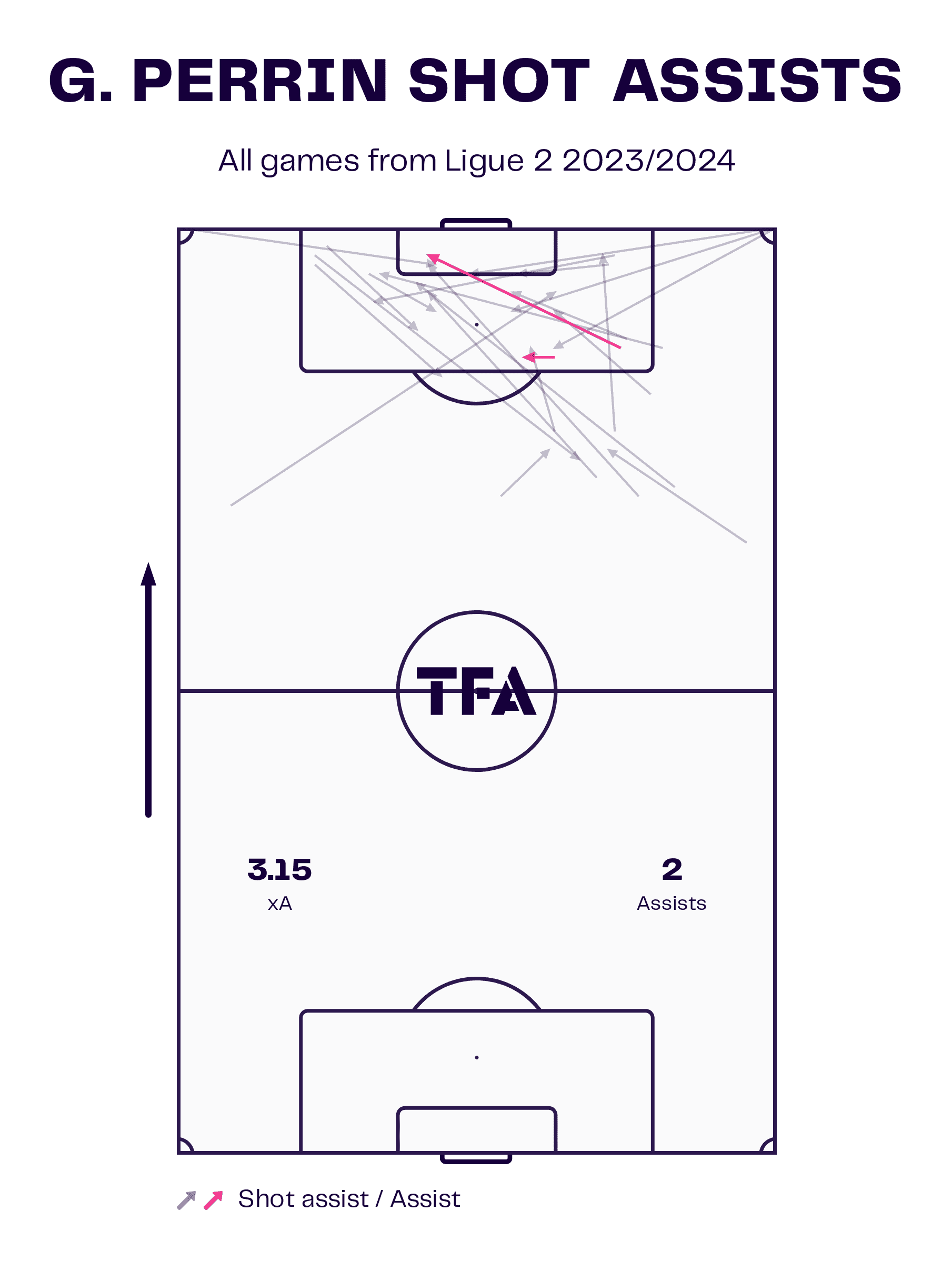
He’s made two assists this term from an xA of 3.15, and his main method of chance creation has been his floated crosses from deep on the right wing.
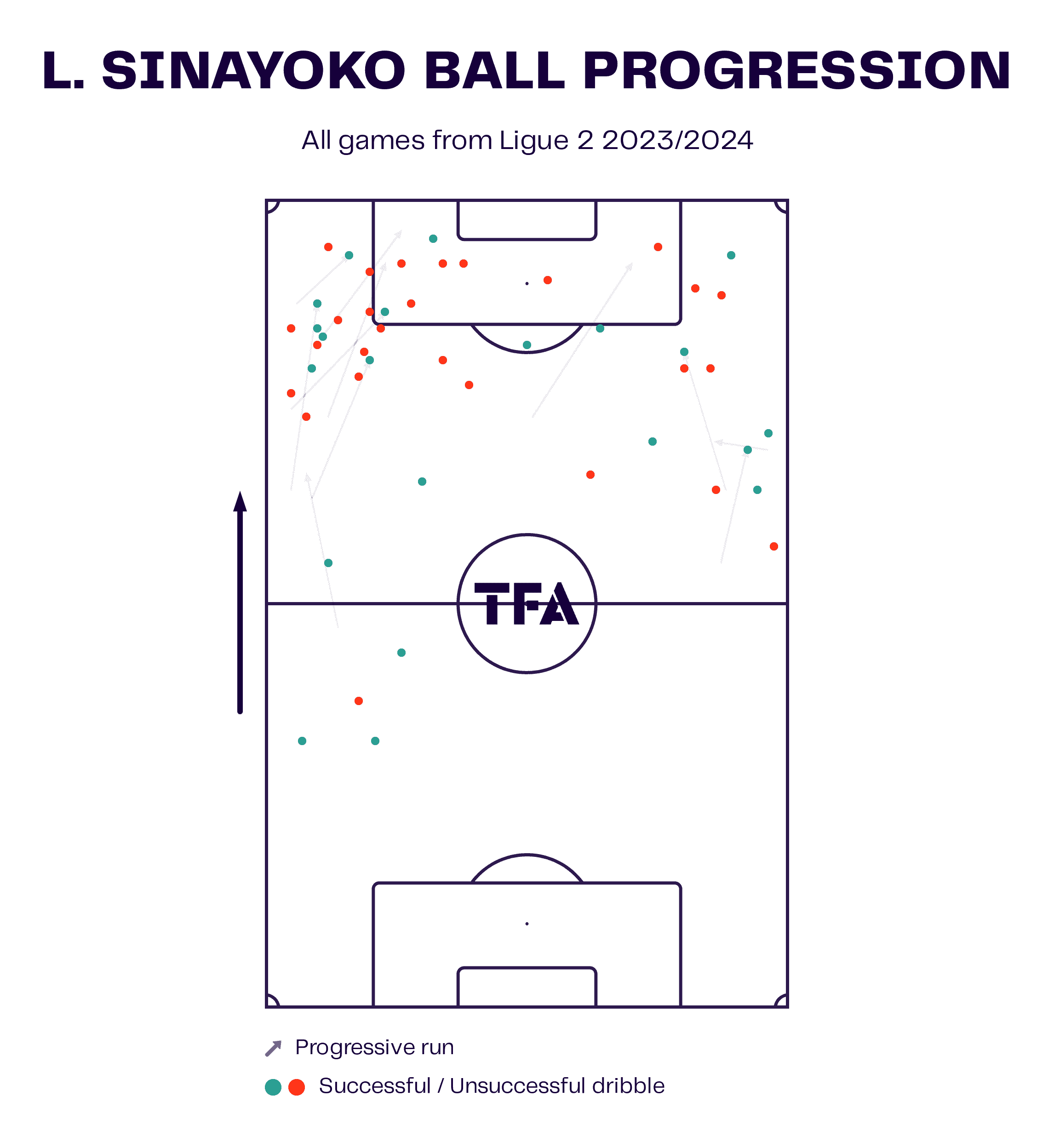
On the left, Auxerre have mainly gone with Lassine Sinayoko this season; he provides a very different threat to the others in the attacking midfield line in that he isn’t much of a crosser, preferring to get the ball into valuable positions via his dribbling instead.
Figure 11 highlights where his dribbles have mainly originated from this term. While some have even started inside Auxerre’s own half, the majority come from that left-wing position inside the final third.
Sinayoko loves getting isolated 1v1 with a full-back, taking them on and driving past — outside or inside — carrying into a position to either perform a cutback or shoot.
The 23-year-old wide man’s ball-carrying threat can also create space for Mensah to overlap and find space on the wing, creating some vital linkup between the two on that side for Pélissier.
This aspect of Sinayoko’s game also proves very helpful in transition, with the winger helping his side gain ground as they look to quickly exploit the opposition’s unprepared defence on the counter.
Centre-forward movement
For our final section of analysis, we’re going to take a look at the centre-forward, usually Florian Ayé, and how his movement, in particular, has been key to Auxerre’s high-scoring start to the campaign.
Of course, with balls flying in from out wide, the creators need something to aim for inside the box, and that target shouldn’t be a statue — that’s too easy for the opposition to defend. They need a mobile target to find space in dangerous areas, dragging the opposition’s defenders around and creating space for others to also exploit — Ayé has done a decent job of this to start the 2023/24 campaign, which we’ll provide some examples of.
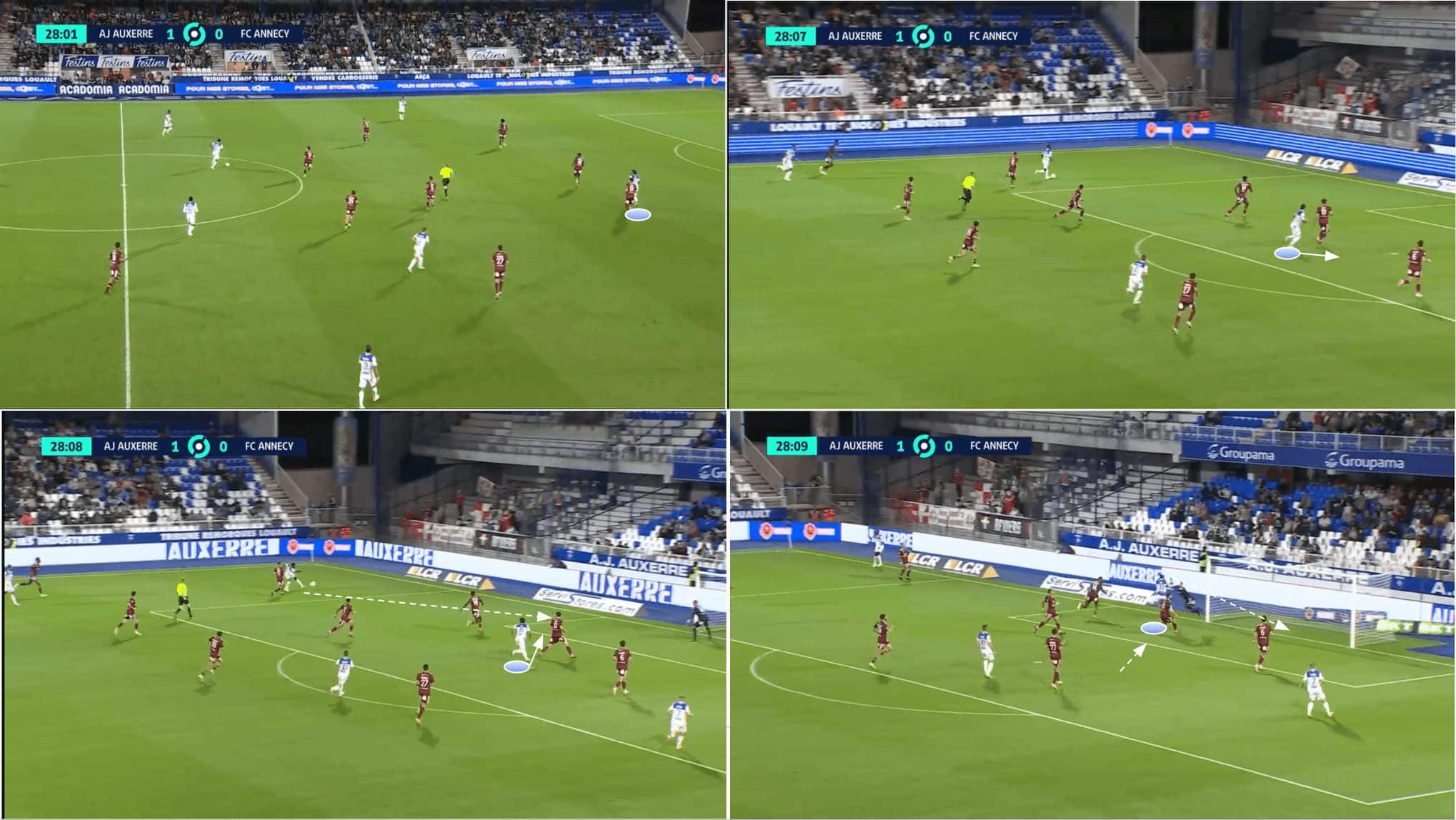
Firstly, take figure 12 — here, we can see Ayé starting in his typical position, right on the shoulder of the opposition centre-back while positioned centrally.
As the ball is played out wide, he begins his run as the opposition’s defence also starts to retreat. He initially makes a move to the defender’s back, forcing the centre-back to adjust his positioning a bit and prevent Ayé from attacking his blind side.
However, this created space for Ayé to dart in front of the defender and exploit some space between the two centre-backs right as the cross was coming in from the edge of the box. This gave Ayé space and a clear path to meet the ball with his head, send it home and double Auxerre’s lead in this game.
Subtle changes of direction were all it took for Ayé to create some space he could take advantage of to meet the cross and score a goal in this example. When the game moves at such a fast pace, as it often does for Auxerre’s attacks, it can just take a subtle movement to completely change the dynamic and give a striker like Ayé — or one of his teammates, for that matter — a really good opportunity.
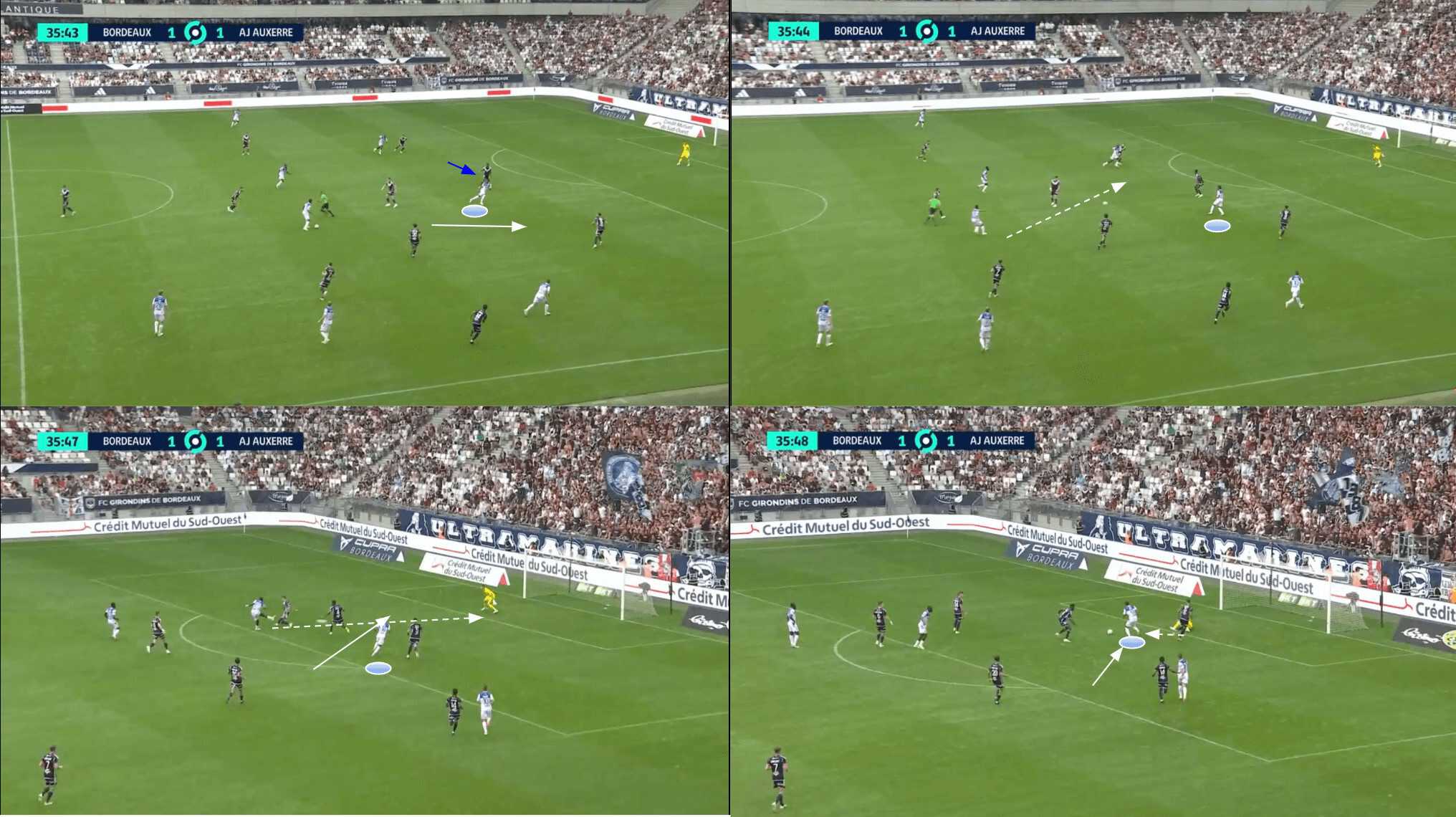
In our second example, we see how Ayé’s movement again dragged the defender with him, this time creating space for the left-winger, Sinayoko, to drift inside and exploit the space to get onto the end of the midfielder’s pass and get a shot off.
Ayé’s movement here is subtle and unselfish. He brought the defender with him, creating a gap right in the middle of the opposition’s backline for Sinayoko to attack. The winger’s focus on and attention to Ayé’s movement was also critical here, as he had to act quickly to avail of the space the striker had created for him. Thankfully, for Auxerre, Sinayoko was very alert and grasped the opportunity.
Though the winger’s attempt at goal was saved, Ayé was now showing his concentration and alertness to react quickly to the rebound and finish the job for Sinayoko, giving his side the lead over Bordeaux with half-time approaching.
Again, this example highlights Ayé’s subtle movement and how it benefits all of Auxerre’s offensive line, not just himself, both in terms of giving them something to aim for and, at times, giving them space to attack for themselves.
Conclusion
To conclude this tactical analysis and team-focused scout report, it’s clear to us that the full-backs have a key role in every phase of possession play for Auxerre this season, with Joly and Mensah proving vital as deep-lying playmakers in the progression phase as well as crossers in the chance creation phase.
Wing play, in general, is crucial for Pélissier’s side in the final third, as is their centre-forward’s movement for generating space in valuable goalscoring positions.
Opponents have found it very difficult to stop Auxerre so far this season, hence why Pélissier’s team are dominating the goalscoring numbers in the league at present. If their wing play continues producing as it has done thus far, we can certainly expect to see the Burgundy club in the promotion conversation at the end of the campaign.





Comments